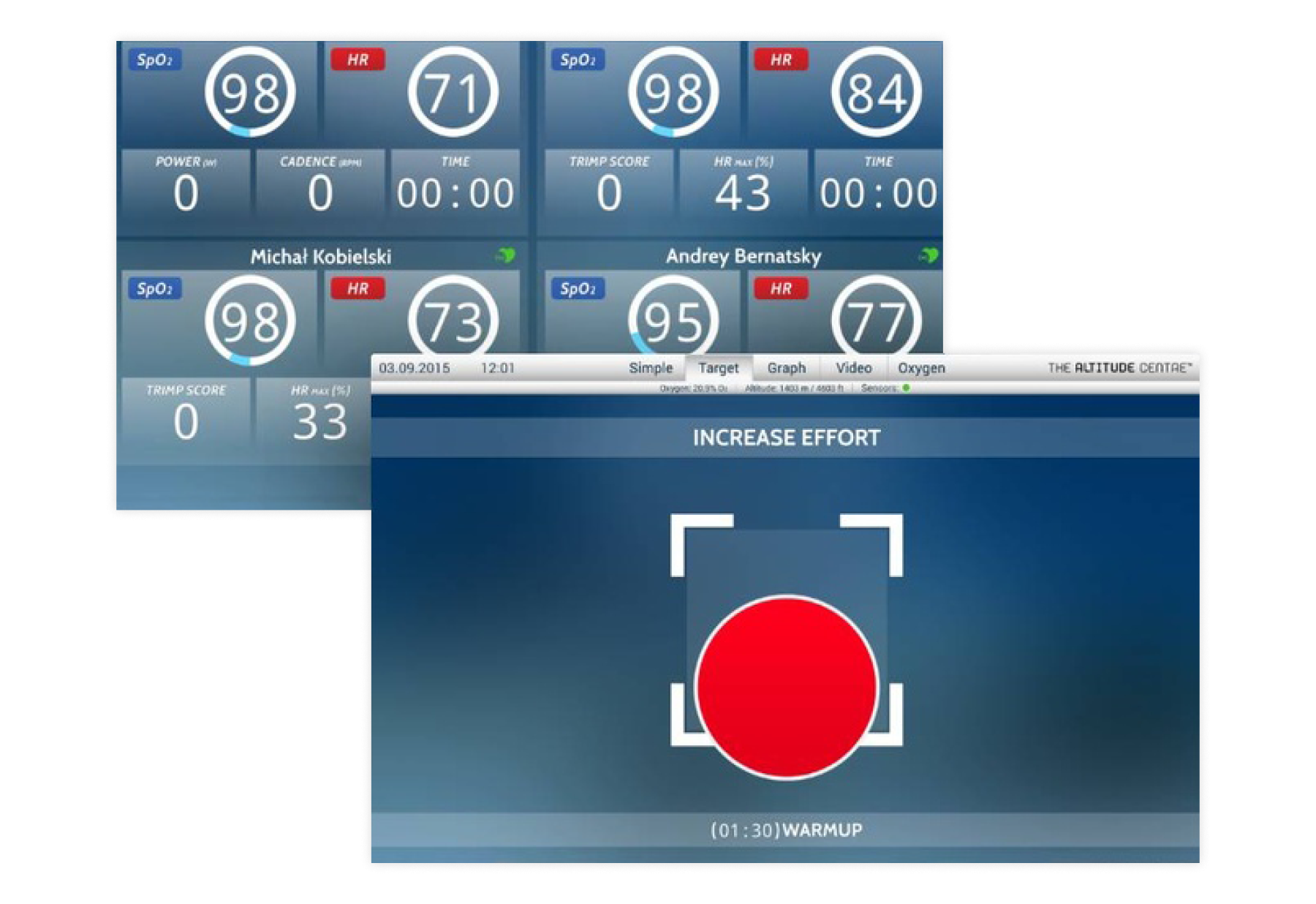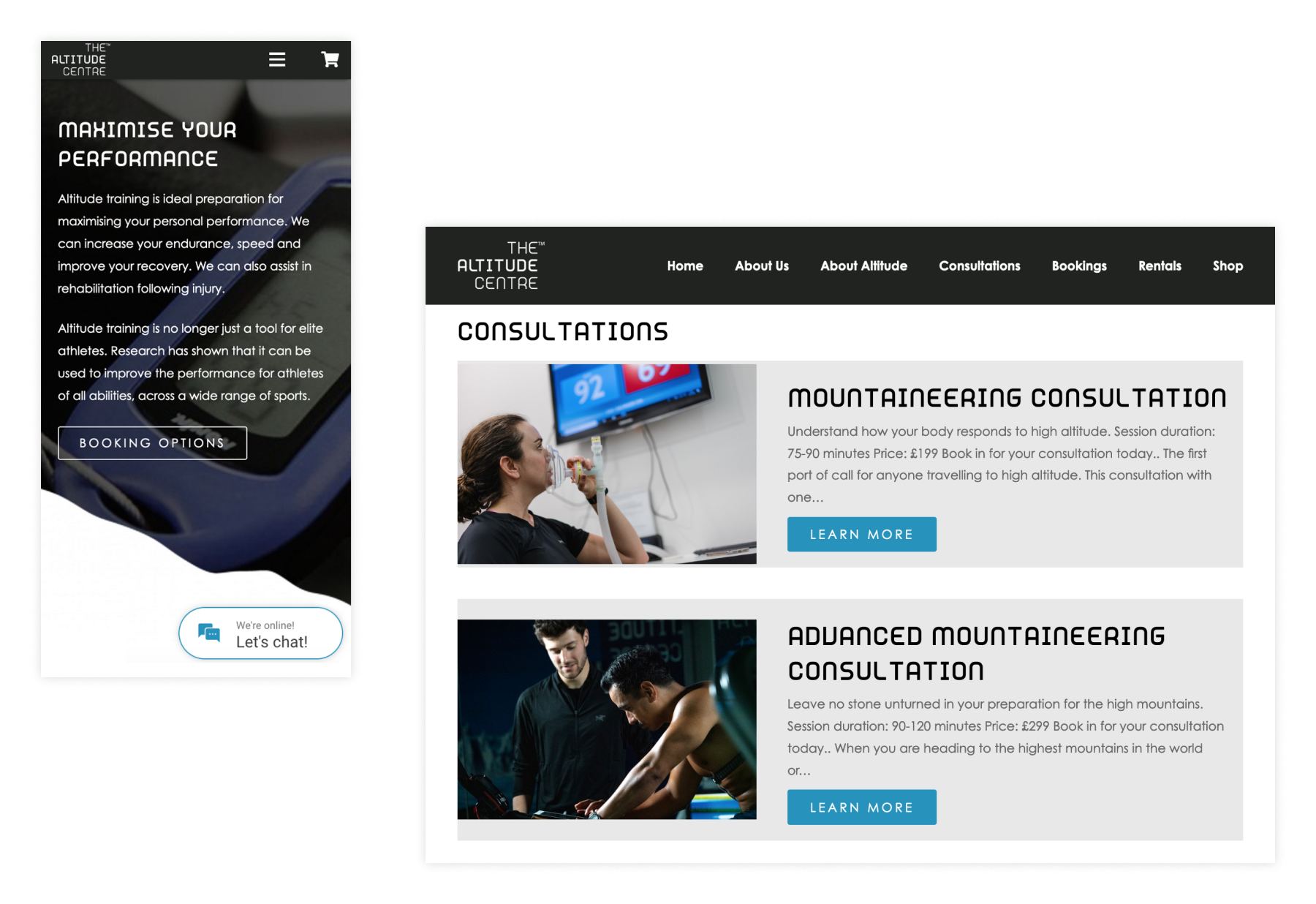Introduction
At Milo Solutions we do not operate only in the digital realm. Exceptional products often require the presence of developers on-site to ensure the best possible understanding of the situation. When the Altitude Centre sought our assistance, we were pleased to visit their London facility. The overextension of the previous developer left the Altitude Centre with unmet project goals, hindering the advancement of the innovative altitude simulation room. We analyzed the project, designed the embedded systems, and implemented the necessary advancements in less than 2 years.
Here is how it went.
In this article:
- The Altitude Center | Introduction & Background Go to text
- The Altitude Center | Research & Colaboration Go to text
- The Altitude Center | IoT Sensors Implementation Go to text
- The Altitude Center | Website and Graphic Design Go to text
- The Altitude Center | Results & Impact Go to text
- The Altitude Center | Lessons for the Future Go to text
The Altitude Center | Introduction & Background
The Altitude Centre was founded in 2003 and focuses on creating various environmental simulations for professional athletes.
It provides training conditions with controlled levels of air O2 saturation (hypoxia training) for example, humidity, temperature, atmospheric pressure, etc.
Their specialist chambers and training systems allow athletes to exercise in every type of environment including i.e. high mountain climate, thousands of meters above sea level, or 100% air humidity of equatorial regions.
Such conditions, especially if controlled, increase the human body's capabilities, support rehabilitation, and allow for better results during prolonged physical exertion.
Their target group includes professional athletes like entire sports teams, Olympic champions, best mountain climbers, etc. Such clients require top-notch software solutions, seamless data collection with blitz transfer, and intuitive visualization.
Unfortunately, the Altitude Centre project was neglected by the previous freelance developer at that time, leaving roughly connected applications, sensors, and advanced technologies without professional support, connection, or updates needed.
Our journey with the Altitude Centre project began when the owner, Richard Rogers, contacted us for help. The Altitude Centre project required both our skills and presence on site, and so we delivered.
The Altitude Center | Research & Colaboration
During the research phase, our CEO, Kacper Gazda, accompanied one of our senior developers to the Altitude Centre London facility to see in real life examples of how high-altitude rooms operate.
We wanted to establish the needs and gain the best understanding of the project possible.
The system involved multiple variations, including a room equipped with special oxygen masks with controlled levels of oxygen, as well as a chamber with comprehensive diagnostics capabilities.
If we had to describe the situation in plain words, it would be:
“(...) a multiple data access points that need sorting out and proper handling.”
The Altitude Centre systems were designed to overcome the traditional problems associated with CO2 or humidity build-up.
To flush out old air just like air conditioning, the system would exhaust preferred air from above and fill the entire room.
There was also a multiple-element filter system that provided the removal of hydrocarbons, odors, and 99.9% of particles down to 0.01 microns (exceeding the HEPA standard).
This immersive environment experience of the visit to London allowed us to gain firsthand insights into the operation and requirements of high-altitude rooms.
The applications for this project were meant to, among other things, manage oxygen availability, check clients' capabilities, and answer questions like:
- What is the heart rate of a trainee?
- What are the O2 and CO2 levels?
- How is the performance of a trainee?
The Altitude Center | IoT Sensors Implementation

Having the project’s needs in mind, we decided to integrate desktop interfaces with embedded sensors to detect and monitor vital metrics utilizing Raspberry Pi technology for data collection.
The project consisted of several stages.
The first steps included creating two applications:
- Desktop app – dedicated for Windows and Mac OS X, it was meant to enable training sessions configuration and to store and display the data retrieved from sensors on an athlete's body in real-time,
- Raspberry Pi app – meant for retrieving and saving data from the device and sensors during training in real-time. It supports a range of data traffic technologies: USB/VCP, Bluetooth, and ANT+.
In the subsequent parts of the project, this functionality was incorporated into the desktop application. Thanks to that, one application dealt efficiently with all the sensors and devices' operations.
The Altitude Center | Website and Graphic Design
The second stage of the project was all about creating a responsive website with intuitive graphic design. The new Altitude Centre web page consisted of three parts:
- All the functionalities available after logging in, for instance: user management, reports creation – all implemented in Django,
- The whole page, except for the shop and the part available after logging in – is based on WordPress.
- The internet shop with secure PayPal payments – integrated services with Mindbody and Magento.
Our last task was to update and redesign an application used in The Altitude Centre POD – a training chamber, which imitates high-mountain conditions. The application controlled the whole chamber and included such facilities as a movie player.

The Altitude Center | Results & Impact
At first, we started with the absolute basics – data collection.
In this project, we had multiple points of data access. We started by installing and pinning up to 6 sensors in the system via small, and yet powerful Raspberry Pi plate. Next, we worked on the IoT part of the project, sending the collected data sets through Wi-Fi and Bluetooth onto the Altitude Centre server.
However, raw and unprocessed sets of collected data still needed to be translated into interactive and intuitive charts. Therefore, we decided to design and create a dedicated desktop app that used charts, visualizations, prediction lines etc.
Data & Reports
The whole system operated in sessions after clicking the start button. The sessions had established lengths and specific exercises for the trainee. An important function of the whole system was also reporting generation.
The first one was available for downloading on the website. The next three ones were generated in the web part and are available after logging in and being generated by the gym employee.
The reports were divided into 4 types:
- Training report – collects the data from a training session (various data collected like pulse, or aeration through sensors placed on a track or spinning bike), generated at the Qt application.
- Exercise report – usually generated after a first training session, it checks a user's capabilities.
- Mountaineering report – generated from exercises preparing users for high mountain expeditions, for instance, climbing Kilimanjaro.
- Health report – generated for those who train in the gym for health purposes.
The Altitude Center | Lessons for the Future
Through close collaboration, active presence on site, innovative technology integration, and a human-centered design approach, we successfully reached the Altitude Centre goals in less than 2 years.
This project exemplifies our commitment to delivering impactful business solutions that push the boundaries of innovation in sports performance.
Interested in our projects for the health / fitness industry?



![[August'25 Update] Top Free AI Models for Business | Automation and LLM's in 2025](/media/images/Img_1.original.webp)

